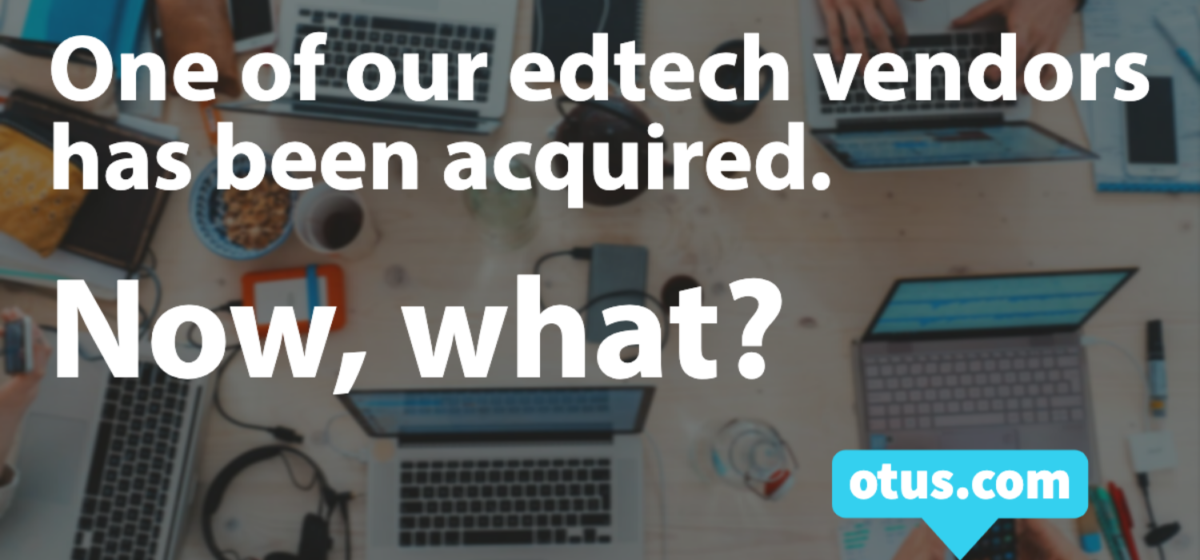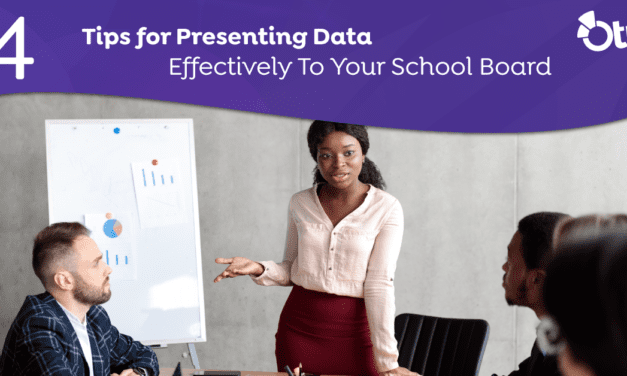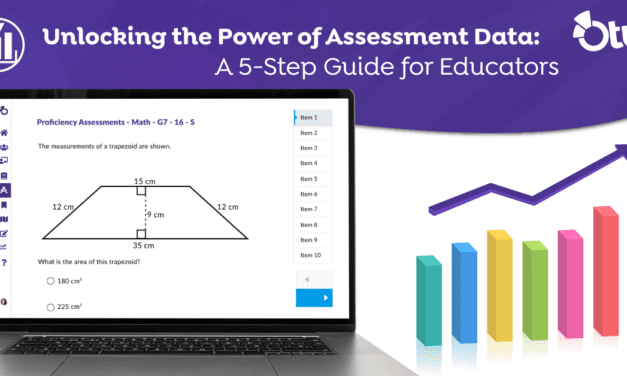With private equity and venture-backed EdTech companies making multiple acquisitions of smaller EdTech companies over the past few years in an effort to consolidate the market, it is very likely that your school is using a product that has either just been acquired or has just acquired another company. Probably both.
Before we discuss what questions should be asked when an EdTech vendor is acquired, let’s discuss a few of the reasons that EdTech companies are sold.
Why do EdTech companies get sold?
In some cases, the co-founders of a company are ready to reap the financial rewards of having built a successful company and sell some or all of their company to someone else. Perhaps an owner wishes to start a new company that solves a different set of problems and decides to sell their current organization. Still, other companies that are not meeting expected growth or revenue goals may determine that additional resources from a new financial partner will take their organization to the next level.
If you encounter one of these scenarios with a partner vendor—whether they are the acquired company or are in the process of acquiring another organization—there are four questions you should ask them in order to understand whether they are the right long-term partner for you. We offer those four questions below, along with responses you should listen for.
4 Questions School Districts Should Ask Vendors When Their Product Gets Acquired
1. We like the people at your company. Will we continue to receive the same level of customer support as we have received in the past?
Talking points you will likely hear from the vendor:
-
You will continue to have the same or better customer support experience that you are used to having via phone, email, chat, etc.
-
Our response times to your support requests will not change or increase.
-
Our goal is to create a seamless experience as we transition into a new company.
The reality:
When one company acquires another, it is inevitable that many things will change for you. Initially, expect your vendor to provide many reassurances that you will not see any negative changes in products, services, or support. However, in all likelihood, the first year of acquisition will see duplicative teams—most from the acquired company—reduced or eliminated to streamline business operations. Processes, timelines, and contacts you are used to will change.
2. Are you still committed to completing the features that were promised to our customer base to be on-time and on-task?
Talking points you will likely hear from the vendor:
-
Specific dates in which promised features would be delivered have not changed.
-
Our product manager (or another person in charge of the product’s roadmap) will be happy to assure you our delivery schedule is still on track.
-
We will be happy to set up a meeting between you, the original product manager (or whoever has been charged with building the product), and a representative of our new owners to discuss any concerns you may have.
The reality:
When one company acquires another, the development priorities of the new owners will oftentimes supersede those of the new subsidiary company. This is especially true if the acquiring company has a product that directly competes with a product from the acquired organization.
Additionally, if the owners of the acquired company do not continue working with the new owners after the acquisition, institutional and “tribal” knowledge about products, processes, timelines, and customers can be lost, further creating confusion about priorities and promises that were made.
3. Will our school system be asked to switch to a different platform?
Talking points you will likely hear from the vendor:
-
You may use your current platform (no length of time commitment)
-
There are currently no plans to make customers who currently use [acquired company’s product] to switch over to [acquisition company’s product].
The reality:
In many instances, the acquiring company will purchase an organization that directly competes with them, effectively purchasing their market share. Initially, the plan will be to keep the acquired company existing “as-is,” which is especially true if a company is acquired during the middle of the school year. However, this usually doesn’t last long. Since it makes very little business sense for one company to offer multiple products that do the same thing, chances are very good that you will be asked to use whichever product that the acquiring company believes is the most profitable platform.
4. How will the two products work together?
Talking points you will likely hear from the vendor:
-
We will soon share details about the technical benefits of this acquisition
-
We will be working on closer integration between the two products so that our clients experience a seamless user experience
The reality:
The biggest obstacle to successful technology company mergers and acquisitions is when two products, typically designed using different programming languages by different developers, built on different platforms and at different points in time, attempt to be integrated into a seamless experience for users.
Assuming that you are currently using a vendor that has either acquired other companies or has been acquired by another company, ask yourself: was the result of the acquisition a more seamless experience between the two products, or a disjointed solution that makes data management and integration more challenging and frustrating?
Otus can help you understand your options
If you decide that the responses you received to the four questions above are not satisfactory, it is important that you understand your options for leaving your existing vendor, including the ability to get all your data.
Otus is a privately owned and fast-growing EdTech company based in Chicago. A company comprised of world-class technologists, veteran educators, and alumni of the largest K-12 EdTech companies, our people are our biggest asset and have the experience and expertise necessary to support your school community.
As large EdTech corporations continue to buy smaller companies in an effort to provide the “all-in-one” platform that is useful to educators, know that Otus was built, from scratch, to be a pre-integrated learning management system, assessment management platform, and data warehouse that integrates with your existing SIS. Discover Otus and request a free demo below!





